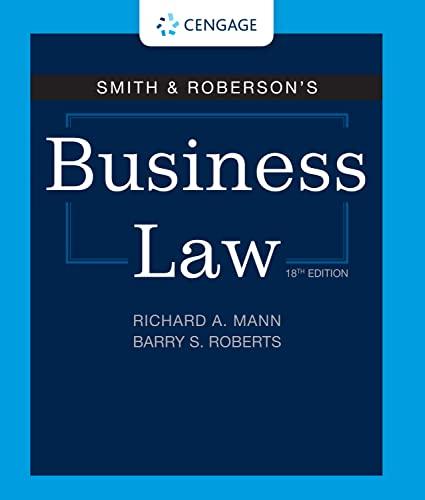The Brazilian Equity Fund, Inc., is a nondiversified, publicly traded, closed-end investment company incorporated under the laws
Question:
The Brazilian Equity Fund, Inc., is a nondiversified, publicly traded, closed-end investment company incorporated under the laws of Maryland. As a closed-end fund, it has a fixed number of outstanding shares, so that investors who wish to acquire shares in the Fund ordinarily must purchase them from a shareholder rather than, as in open-end funds, directly from the Fund itself. Shares in closed-end funds are traded in the same manner as are shares of corporate stock. Shares in the Fund are listed and traded on the New York Stock Exchange. The number of outstanding shares in the Fund is “fixed” because this number does not change on a daily basis. Although closed-end funds do not sell their shares to the public in the ordinary course of their business, there are methods available to them to raise new capital after their initial public offering. One such device is a “rights offering,” by which a fund offers shareholders he opportunity to purchase newly issued shares. Rights so offered may be transferable, allowing the current share-holder to sell them in the open market, or nontransferable, requiring the current shareholder to use them herself or lose their value when the rights expire. On June 6, the Fund announced that it would issue one nontransferable “right” per outstanding share to every shareholder, and that every three rights would enable the shareholder to purchase one new share in the Fund. The subscription price per share was set at 90 percent of the lesser of (1) the average of the last reported sales price of a share of the Fund’s common stock on the New York Stock Exchange on August 16, the date on which the rights expired, and the four business days preceding and (2) the per-share net asset value at the close of business on August 16. At the close of business on August 16, the closing market price for the Fund’s shares was $12.38, and the Fund’s per-share net asset value was $17.24. The Fund’s shareholders purchased 70.3 percent of the new shares available at a subscription price set at $11.09 per share, 90 percent of the average closing price for the Fund on that and the preceding four days. Through the rights offering, the Fund raised $20.6 million in new capital. A shareholder brought a class action against the Fund’s directors, senior officers, and investment advisor asserting that this sort of rights offering is coercive because it penalized shareholders who did not participate by diluting the value of old shares. The plaintiff ’s complaint included three direct class-action claims on behalf of all shareholders alleging that the defendants breached their duties of loyalty and care at common law. It asserted that these breaches of duty resulted in four kinds of injury to shareholders:
(1) Loss of share value resulting from the underwriting and other transaction costs associated with the rights offering;
(2) Downward pressure on share prices resulting from the supply of new shares;
(3) Downward pressure on share prices resulting from the offering of shares at a discount; and
(4) Injury resulting from coercion, in that “shareholders were forced to either invest additional monies in the Fund or suffer a substantial dilution.” Explain (1) which of these claims are direct claims and (2) which of these claims are derivative claims.
Step by Step Answer:

Smith And Roberson Business Law
ISBN: 9780357364000
18th Edition
Authors: Richard A. Mann, Barry S. Roberts





